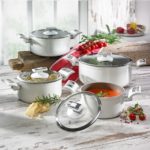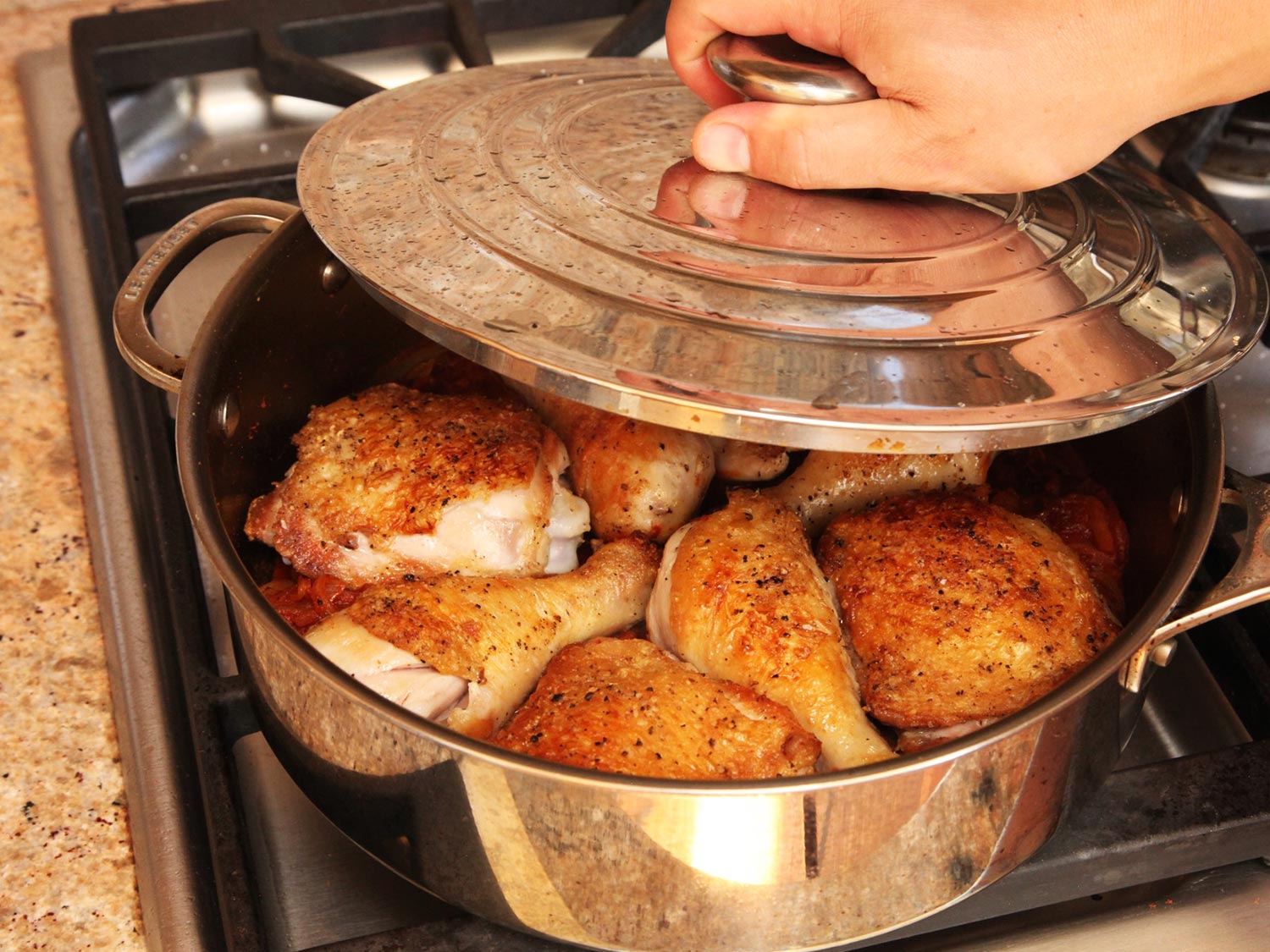How to clean carbon deposits from stainless steel pans
The key to a deliciously prepared meal is not only the culinary skills of the cook and the quality ingredients of the dish, but also how clean the dishes are washed. Do all housewives know how to properly care for stainless steel cookware? 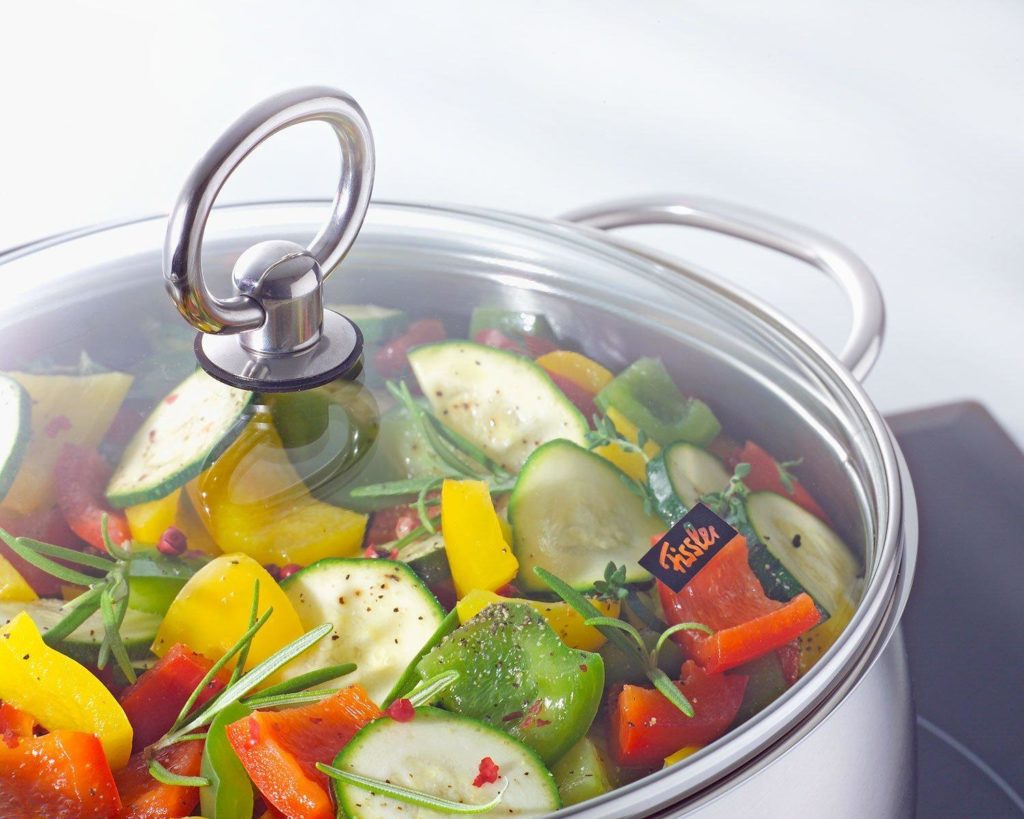
The content of the article
General recommendations for caring for stainless steel pans
We all know very well that time knows no pity. Under its influence, any thing gradually loses its former shine and presentable appearance. Dishes are no exception - even if they are stainless. To ensure that your favorite frying pan or pot pleases the eye for as long as possible, it is necessary to clean it after creating each culinary masterpiece. Let's fight the fat and prevent it from accumulating on the walls! 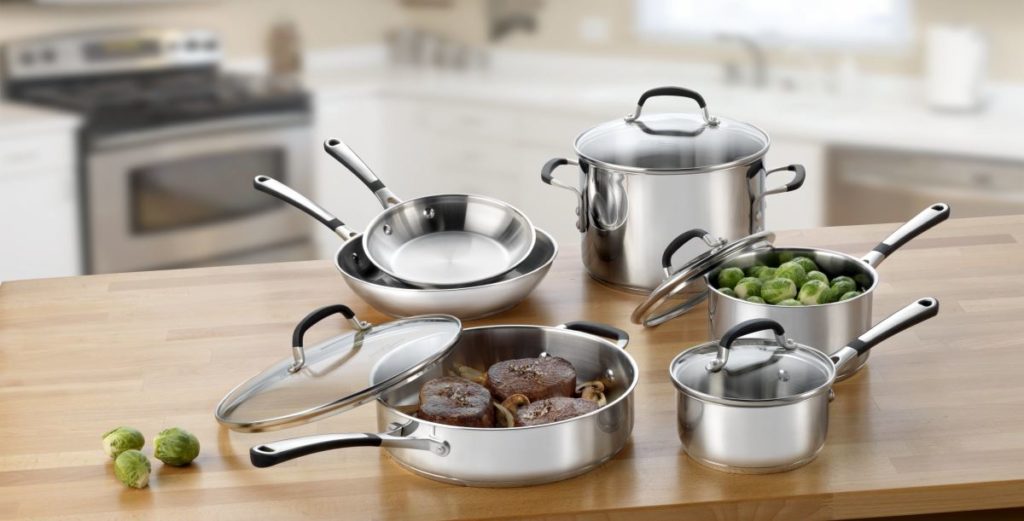
Some simple rules will help ensure the longevity of your dishes:
- After the cooking has been successfully completed and the household has even had time to consume it, you should not throw all the dishes into the sink, consoling yourself with the thought that “it will wait until tomorrow.”He won't tolerate it! When the dishes have cooled, they need to be washed thoroughly with tap water, adding a non-aggressive detergent. If you wash it correctly, then streaks and various unpleasant stains will not appear either on the walls or on the bottom. The main thing is not to put hot dishes in cold water: such a “contrast shower” will damage the material.
- Do not use products containing abrasives for cleaning; forget about various metal brushes, as well as scrapers. All this leaves damage on the surface where dirt will accumulate.
- It is highly undesirable to wash such items in dishwashers. Even if the label says that automatic washing is allowed, it would be better to first soak the dishes in warm water so that all food residues are soaked, and only then send them to the device.
- Once all dirt has been removed from the surface, wipe it all off with a dry cloth. This way you will prevent streaks that are difficult to remove. Wipe the dishes with light movements to maintain a smooth and shiny surface.
- If the dishes lose their original shine, ordinary potatoes can correct the situation. Peel the raw potatoes, divide them into two parts and carefully rub the surface. After this, wipe with a cloth.
- And the main rule is regular care. There is no need to leave anything for tomorrow, especially something that should have been done yesterday.
If you follow these tips, your dishes can last a very long time, maintaining their original shine. Do not chase expensive chemicals from stores - it is better to prepare a cleaning product yourself. So the budget will suffer less, and allergies will not be scary.
What household chemicals are suitable for stainless steel cookware?
Nowadays, on the shelves of hardware stores there is a huge selection of various preparations for cleaning a wide variety of surfaces, but they need to be used wisely. As already mentioned, a taboo should be placed on all metal tools and materials. This also applies to detergents containing abrasives. And you certainly should not carry out cleaning procedures with sand or sandpaper. Soft sponges are much safer. 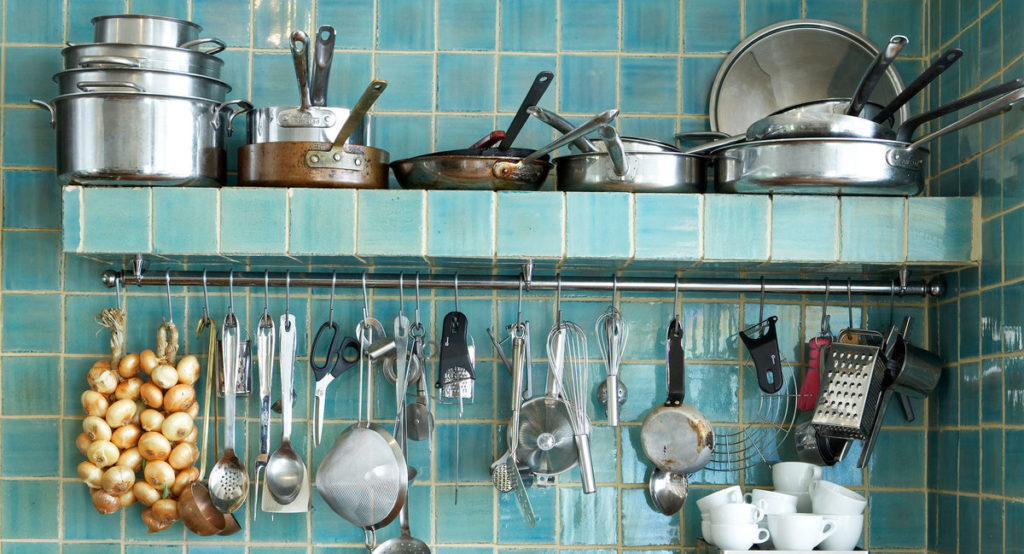
In order to clean stainless steel cookware from scale and deposits, you can use various products containing acid. The only point: they can only be used on the outer surface. These products are good at removing old grease and deposits from dishes.
Most often used:
- "Shumanite."
- "Chister."
- Oven Cleaner.
All these products cope with their task very effectively, only they contain components that can lead to allergies, and when in contact with the skin of the hands, they can contribute to the appearance of ulcers. These detergents should only be used while protecting your hands with rubber gloves.
The technology of use for all acid-containing products is identical:
- the composition is applied to the contaminated surface and left for thirty minutes;
- the treated surface is washed with detergent and then with hot running water with good pressure.
Since most acids have a pungent and strong odor, be sure to ventilate the room when washing.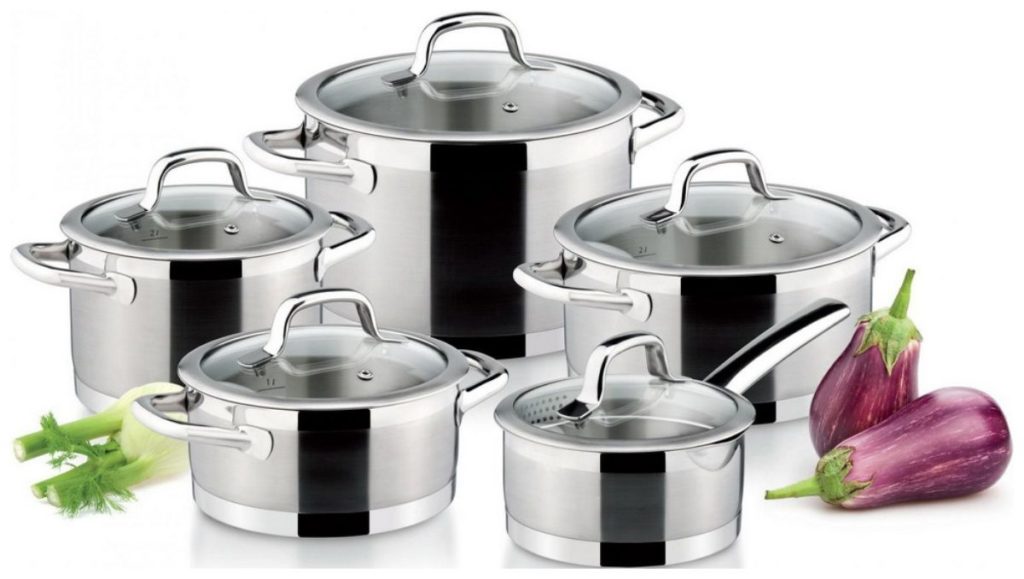
Important! Cleaners based on aggressive acids can only be used on the outside of dishes and only with rubber gloves.
Using improvised products for cleaning stainless steel cookware
Any housewife notices that as a result of her culinary delights, grease stains and soot appear on the walls of the dishes. All this is called soot. It is not so easy to get rid of it, because stainless steel does not tolerate the use of metal brushes and powders with abrasive substances. They cause tiny cracks on the surface, which creates fertile ground for the accumulation of dirt.
Cleaning the outside of the pan
When washing stainless steel dishes, it is permissible to use only gentle cleaning agents. Many of these “helpers” are constantly present in any apartment.
Water and vinegar
 If you dig deep in your kitchen, you will definitely find containers of the required size. Fill it with water and pour in vinegar. The ratio should be one to one. The mixture must be heated to a boil and a contaminated container placed over the steam. Leave for about fifteen minutes. Acetic fumes will soften the layer of dirt, and it can be easily removed with a soft sponge with baking soda applied to it. This method allows you to clean the outer side of the bottom from carbon deposits.
If you dig deep in your kitchen, you will definitely find containers of the required size. Fill it with water and pour in vinegar. The ratio should be one to one. The mixture must be heated to a boil and a contaminated container placed over the steam. Leave for about fifteen minutes. Acetic fumes will soften the layer of dirt, and it can be easily removed with a soft sponge with baking soda applied to it. This method allows you to clean the outer side of the bottom from carbon deposits.
Laundry soap and glue
To prepare this solution you will need a large container. In it you need to mix four liters of water, one third of a piece of grated laundry soap, and add a tablespoon of PVA glue. You need to immerse the pan in the prepared composition and boil for thirty minutes. This method will remove very old dirt.
Soda
Boiling in a soda solution works well to remove burnt-on dirt. You need to find a large container, pour five liters of water into it and bring to a boil. After this, add a pack of soda to the boiling water. Place the pan in the resulting mixture and continue to boil for two hours.After this, apply soda to a soft sponge and remove any remaining dirt.
Lemon juice
Lemon juice can get rid of minor dirt and restore shine. You need to take half a lemon, squeeze the juice into a glass of water and wipe the surface with this mixture.
How to wash dishes inside at home
When choosing how and what to wash, you need to consider:
- age of dirt;
- how much and what kind of food was burnt;
- What alloy is the cookware made of?
Soda
If the stain is not old, you can apply a thick layer of baking soda to it and leave it for two hours. After this, remove the soda along with the dirt.
Reference! Soda ash is more effective, but if you use it, the room must have good ventilation.
Mix with detergent or laundry soap
You need to add detergent to the water or rub laundry soap. Pour the resulting mixture into a dirty pan and place on the stove. The water should completely hide the contamination. The mixture must be brought to a boil and wait twenty minutes.
Let the dishes sit for a couple of hours, and then remove the dirt with a sponge.
Vinegar
Fill the bottom with a nine percent vinegar solution. Wait three hours. After this, the pan must be thoroughly washed with plenty of water, adding detergent to it. Wipe the dishes.
Lemon acid
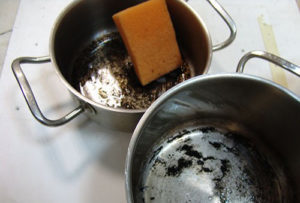 Add a tablespoon of citric acid to a glass of water. Pour the solution into the burnt pan so that the liquid completely covers the contaminated surface. Bring to a boil and wait twenty minutes. Wipe the dirty area with a sponge. Rinse under running water and dry well.
Add a tablespoon of citric acid to a glass of water. Pour the solution into the burnt pan so that the liquid completely covers the contaminated surface. Bring to a boil and wait twenty minutes. Wipe the dirty area with a sponge. Rinse under running water and dry well.
Activated carbon
A very effective and common remedy. The required number of tablets must be ground to a powder.The amount should be enough to hide the bottom. Add water until you get a paste-like mass. Wait twenty minutes and rinse.
Coffee grounds
A good substitute for activated carbon is coffee grounds. If you love this drink, the leftovers from the cup can be used for washing. Simply apply the thickener to a sponge and wipe the dirty surface.
Milk serum
Whey contains lactic acid. Its action is capable of removing any burnt-on contaminants. You need to pour the whey into the pan; it should be two centimeters above the contamination. The dishes are left in this form for twenty-four hours. Then it is simply washed in running water.
The use of various salts, as well as substances containing chlorine, for stainless steel cookware is not allowed. They react with the metal, causing it to darken and cause corrosion.

